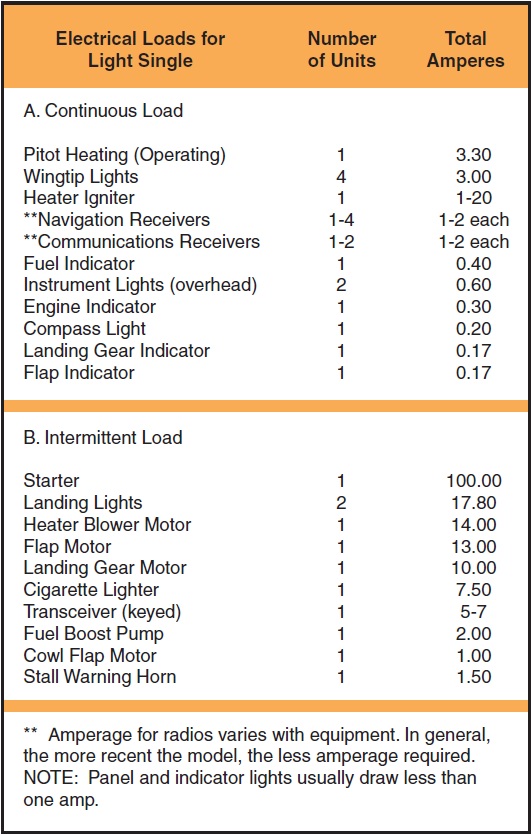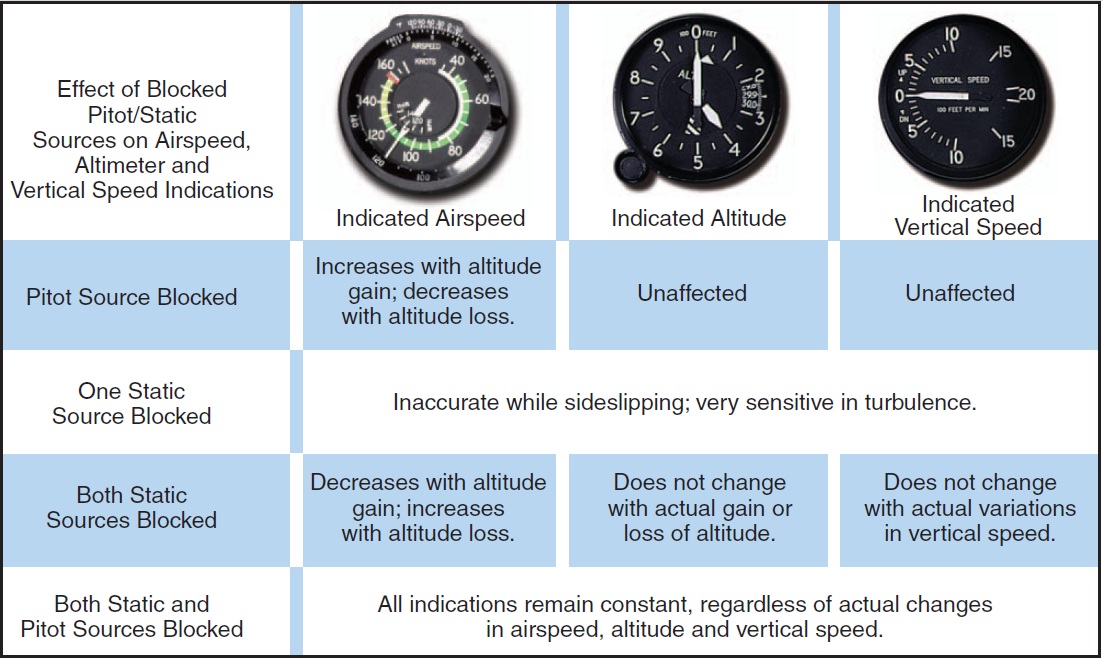
Chapter 16 Emergency Procedures
Table of Contents
Emergency Situations
Emergency Landings
Types of Emergency Landings
Psychological Hazards
Basic Safety Concepts
General
Attitude and Sink Rate Control
Terrain Selection
Airplane Configuration
Approach
Terrain Types
Confined Areas
Trees (Forest)
Water (Ditching) and Snow
Engine Failure After Takeoff (Single-Engine)
Emergency Descents
In-Flight Fire
Engine Fire
Electrical Fires
Cabin Fire
Flight Control Malfunction / Failure
Total Flap Failure
Asymmetric (Split) Flap
Loss of Elevator Control
Landing Gear Malfunction
Systems Malfunctions
Electrical System
Pitot-Static System
Abnormal Engine Instrument Indications
Door Opening In Flight
Inadvertent VFR Flight Into IMC
General
Recognition
Maintaining Airplane Control
Attitude Control
Turns
Climbs
Descents
Combined Maneuvers
Transition to Visual Flight

SYSTEMS MALFUNCTIONS
ELECTRICAL SYSTEMThe loss of electrical power can deprive the pilot of numerous critical systems, and therefore should not be taken lightly even in day/VFR conditions. Most in-flight failures of the electrical system are located in the generator or alternator. Once the generator or alternator system goes off line, the electrical source in a typical light airplane is a battery. If a warning light or ammeter indicates the probability of an alternator or generator failure in an airplane with only one generating system, however, the pilot may have very little time available from the battery.
The rating of the airplane battery provides a clue to how long it may last. With batteries, the higher the amperage load, the less the usable total amperage. Thus a 25-amp hour battery could produce 5 amps per hour for 5 hours, but if the load were increased to 10 amps, it might last only 2 hours. A 40-amp load might discharge the battery fully in about 10 or 15 minutes. Much depends on the battery condition at the time of the system failure. If the battery has been in service for a few years, its power may be reduced substantially because of internal resistance. Or if the system failure was not detected immediately, much of the stored energy may have already been used. It is essential, therefore, that the pilot immediately shed non-essential loads when the generating source fails. [Figure 16-9] The pilot should then plan to land at the nearest suitable airport.

Figure 16-9. Electrical load for light single.
What constitutes an “emergency” load following a generating system failure cannot be predetermined, because the actual circumstances will always be somewhat different—for example, whether the flight is VFR or IFR, conducted in day or at night, in clouds or in the clear. Distance to nearest suitable airport can also be a factor.
Ch 16.qxd 5/7/04 10:30 AM Page 16-11The pilot should remember that the electrically powered (or electrically selected) landing gear and flaps will not function properly on the power left in a partially depleted battery. Landing gear and flap motors use up power at rates much greater than most other types of electrical equipment. The result of selecting these motors on a partially depleted battery may well result in an immediate total loss of electrical power.
If the pilot should experience a complete in-flight loss of electrical power, the following steps should be taken:
- • Shed all but the most necessary electrically-driven equipment.
- • Understand that any loss of electrical power is critical in a small airplane—notify ATC of the situation immediately. Request radar vectors for a landing at the nearest suitable airport.
- • If landing gear or flaps are electrically controlled or operated, plan the arrival well ahead of time. Expect to make a no-flap landing, and anticipate a manual landing gear extension.
PITOT-STATIC SYSTEM
The source of the pressure for operating the airspeed indicator, the vertical speed indicator, and the altimeter is the pitot-static system. The major components of the pitot-static system are the impact pressure chamber and lines, and the static pressure chamber and lines, each of which are subject to total or partial blockage by ice, dirt, and/or other foreign matter. Blockage of the pitot-static system will adversely affect instrument operation. [Figure 16-10 on next page]

Figure 16-10. Effects of blocked pitot-static sources.
Partial static system blockage is insidious in that it may go unrecognized until a critical phase of flight. During takeoff, climb, and level-off at cruise altitude the altimeter, airspeed indicator, and vertical speed indicator may operate normally. No indication of malfunction may be present until the airplane begins a descent.
If the static reference system is severely restricted, but not entirely blocked, as the airplane descends, the static reference pressure at the instruments begins to lag behind the actual outside air pressure. While descending, the altimeter may indicate that the airplane is higher than actual because the obstruction slows the airflow from the static port to the altimeter. The vertical speed indicator confirms the altimeter’s information regarding rate of change, because the reference pressure is not changing at the same rate as the outside air pressure. The airspeed indicator, unable to tell whether it is experiencing more airspeed pitot pressure or less static reference pressure, indicates a higher airspeed than actual. To the pilot, the instruments indicate that the airplane is too high, too fast, and descending at a rate much less than desired.
If the pilot levels off and then begins a climb, the altitude indication may still lag. The vertical speed indicator will indicate that the airplane is not climbing as fast as actual. The indicated airspeed, however, may begin to decrease at an alarming rate. The least amount of pitch-up attitude may cause the airspeed needle to indicate dangerously near stall speed.
Managing a static system malfunction requires that the pilot know and understand the airplane’s pitot-static system. If a system malfunction is suspected, the pilot should confirm it by opening the alternate static source. This should be done while the airplane is climbing or descending. If the instrument needles move significantly when this is done, a static pressure problem exists and the alternate source should be used during the remainder of the flight.
PED Publication